How to Deal With Postpartum Hair Loss
Real answers to real questions about this common and temporary condition. What is it? Why is it happening? How do I handle it?
How to Deal With Postpartum Hair Loss
As you settle into your new routine and get accustomed to having a little one in your home, it may seem that everything that comes with pregnancy and childbirth are behind you. That is until you notice excessive hair loss. While it can be a bit alarming to see so much hair in the shower or on your brush, take heart. It's very common and temporary. In fact, most women, up to 90%, experience postpartum hair loss. Thinning hair and hair loss, effect of pregnancy.

What is it?
Postpartum hair loss, also known as postpartum alopecia and telogen effluvium, is a common condition that occurs after giving birth. You may notice that your hairbrush is fuller than normal or that there's an unusually large amount of hair in the shower drain, especially when you wash your hair. While you are losing more hair than normal, postpartum hair loss is painless, harmless, and temporary.
There are four hair cycles or stages of hair growth and the length of each stage is a little different for different parts of the body. For this article, we'll focus on the hair on the head. The first stage is the anagen or growing stage. This is when the hair grows while remaining firmly attached inside the hair follicles. This stage can last roughly 3-7 years. Most of the hair on your head is in this stage. The second stage is the catagen phase. It's also called the transition phase because your hair is getting ready to be shed. This stage only lasts about 10 days. At this time the hair stops growing and detaches from the hair follicle but is still inside of it. Only about 3-6 percent of your hair is in this stage at any given time. The third stage of hair growth is called the resting phase. In this phase, new hairs are beginning to form inside the follicles while the previous hairs that have not been shed yet are still in place. This phase lasts about three months. The last stage is called the exogen phase. This is where the hairs that have stopped growing and are detached from the follicles fall out or are shed. The average person sheds about 50 - 100 hairs each day but for the postpartum woman, this amount is increased.
What causes it?
Postpartum hair loss is caused when progesterone and estrogen levels return back to normal. Throughout your pregnancy, raised estrogen and progesterone levels reduced hair loss and shedding, and most likely resulted in fuller, healthier hair. Giving birth is a shock to the body and it's this shock that causes the phase telogen of your hair cycle to go into overdrive. Once your body's hormones return to their pre-pregnancy levels, the exogen or shedding occurs.
When does it happen?
It varies from person to person but it usually begins 2-6 months postpartum, however, it can begin as late as a year after giving birth. Contributing factors like stress levels and whether you're breastfeeding will determine the onset. Breastfeeding keeps estrogen and progesterone levels a bit elevated and may delay the onset of postpartum hair loss. Also, each pregnancy is different so just because you experience postpartum hair loss with one pregnancy does not mean it'll happen with the next. The good news is that postpartum hair loss is temporary and will eventually correct itself. Once your estrogen and progesterone levels are back to normal the hair should enter the anagen (growing) phase again. When it does, you may notice the regrowth is finer. Many women experience a change in hair texture after giving birth.

How can I avoid it?
While it's not entirely preventable, there are some ways to minimize the effects. A healthy diet rich in protein throughout your pregnancy and after will help guard against it. This is because hair is made up of protein. Protein-rich foods like fish, lean meats, legumes, eggs, and dairy help contribute to healthy hair. The best thing you can do for your postpartum hair is to take steps to minimize it before it begins. This means eating healthy.
How do I treat it?
There are several steps you can take to minimize the effects of postpartum hair loss. Vitamins, specifically a good quality prenatal vitamin, help make up for nutritional deficiencies. Most people do not eat enough vitamin and mineral-rich foods so supplementing is essential. It's also important to note that not all supplements are the same. Quality makes all the difference, so get the best vitamin you can afford. The increased nutrition will help keep you and your hair, skin, and nails looking great. In addition, our Hair Growth Vitamins are excellent in ensuring your body has the best nutrients for growing strong and healthy hair. Be sure to check with your physician to approve taking the vitamins while pregnant or breastfeeding. There are also many women who also take prenatal vitamins even though they're not pregnant or breastfeeding. They too will enjoy the many health benefits our vitamins provide.
Applying hair oil regularly helps hair growth by penetrating the cuticle and follicle. Coconut, almond, argan, and jojoba are all excellent choices. Our Hair Growth Oil has a cocktail of selected oils that'll nourish and encourage healthy hair growth. It's also vegan and cruelty free. Depending on your hair type, oil treatments can be done every time you wash your hair or done in combination with a cap and low heat once a month. Massaging your scalp with a little oil weekly also helps stimulate hair follicles into the anagen phase while ensuring the new hair is as healthy as possible.

Reduce stress levels by resting or meditating. We know there isn't a lot of spare time with a newborn in the house but it's important to not forget about taking care of yourself. Carve out time to get as much rest as possible. Take a relaxing bath, paint your toes, or read a book. Childbirth is a shock to the body and caring for your mental and physical well-being is vital for a full recovery.
Be gentle on your hair. Avoid harsh and tight styling. Instead of a ponytail, use a clip. Try leaving your hair down and try not to overbrush. Avoid combing or brushing your hair when it's wet and minimize the use of heated drying or styling tools. Instead of washing it every day, opt for once a week and use a dry shampoo for quick touch-ups.
Try a new hairstyle that will hide thin spots. Bangs are a popular option that hides the new hairs coming in around the hairline. Accessories like wide headbands, scarves, and clip-in hair extensions are also excellent for disguising thinning hair. You can also move your part or style your hair in a way that doesn't expose the scalp.
Whether you have one child, five, or more, postpartum women around the world have been handling hair loss for centuries. While it may be a little inconvenient, it'll pass and you'll be back on track for growing healthy and gorgeous locks in months. In the meantime, get creative with your hair care, get some high-quality vitamins like the ones in our Post Baby Hair Bundle, then focus on enjoying these precious moments with your little one.


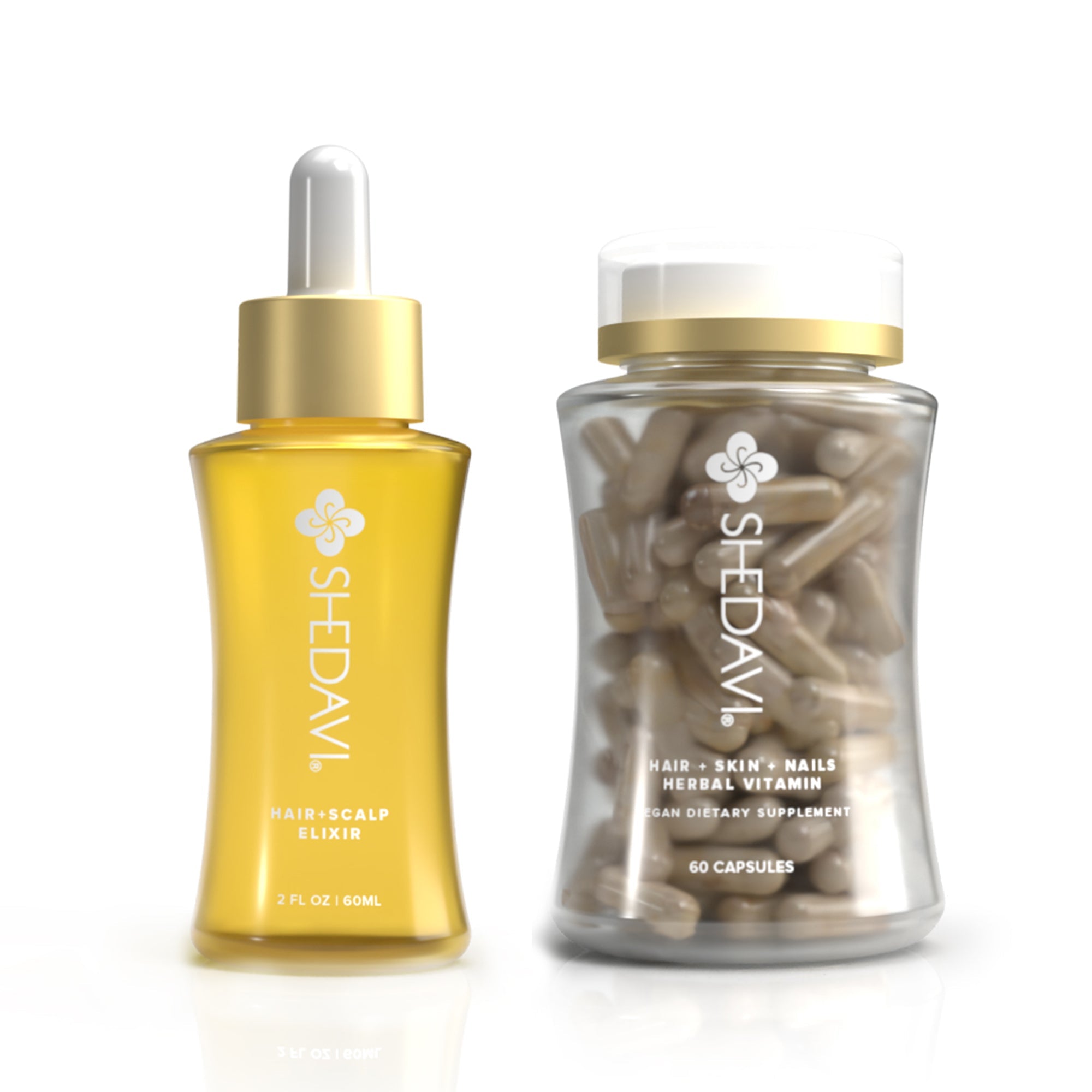
 5min Read
5min Read
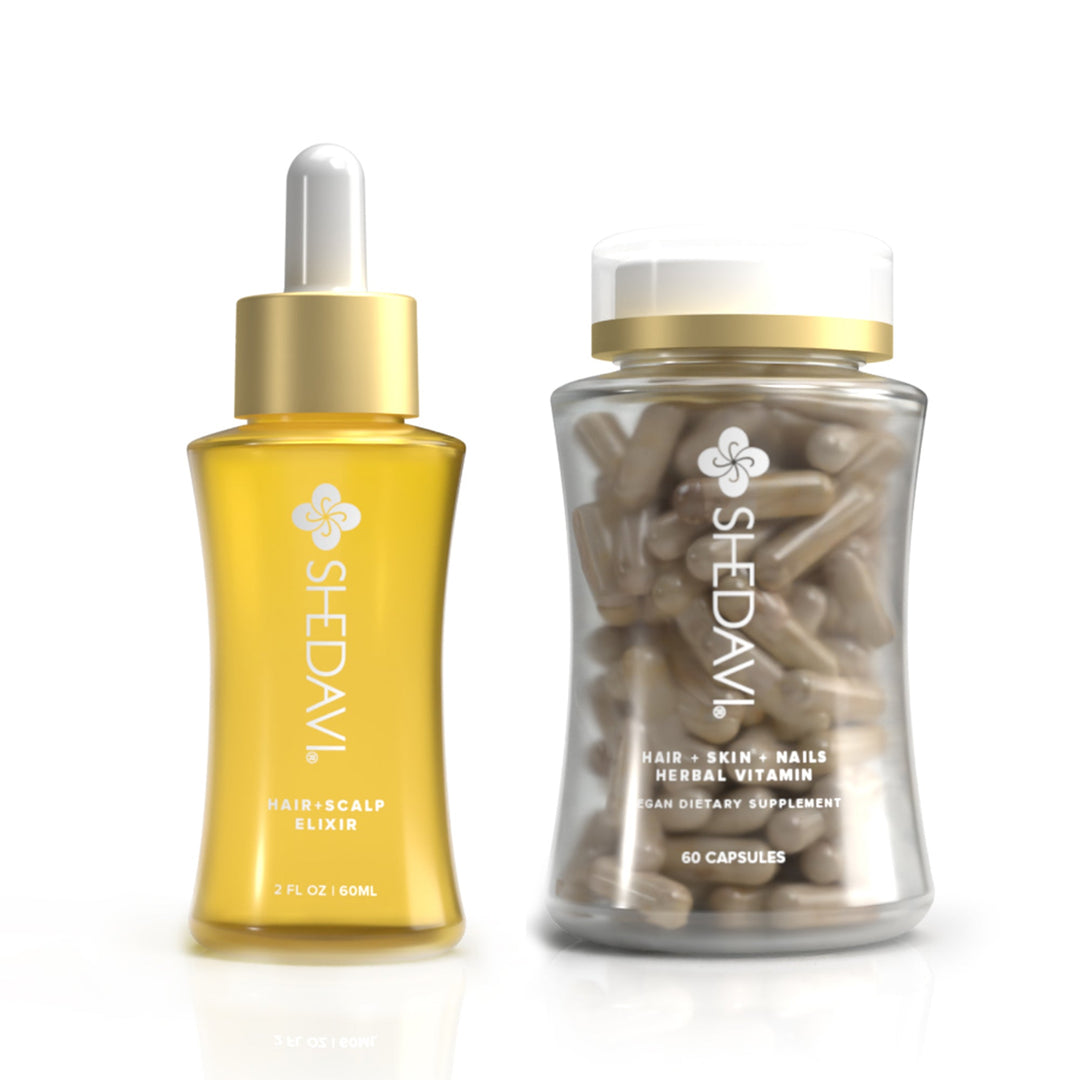
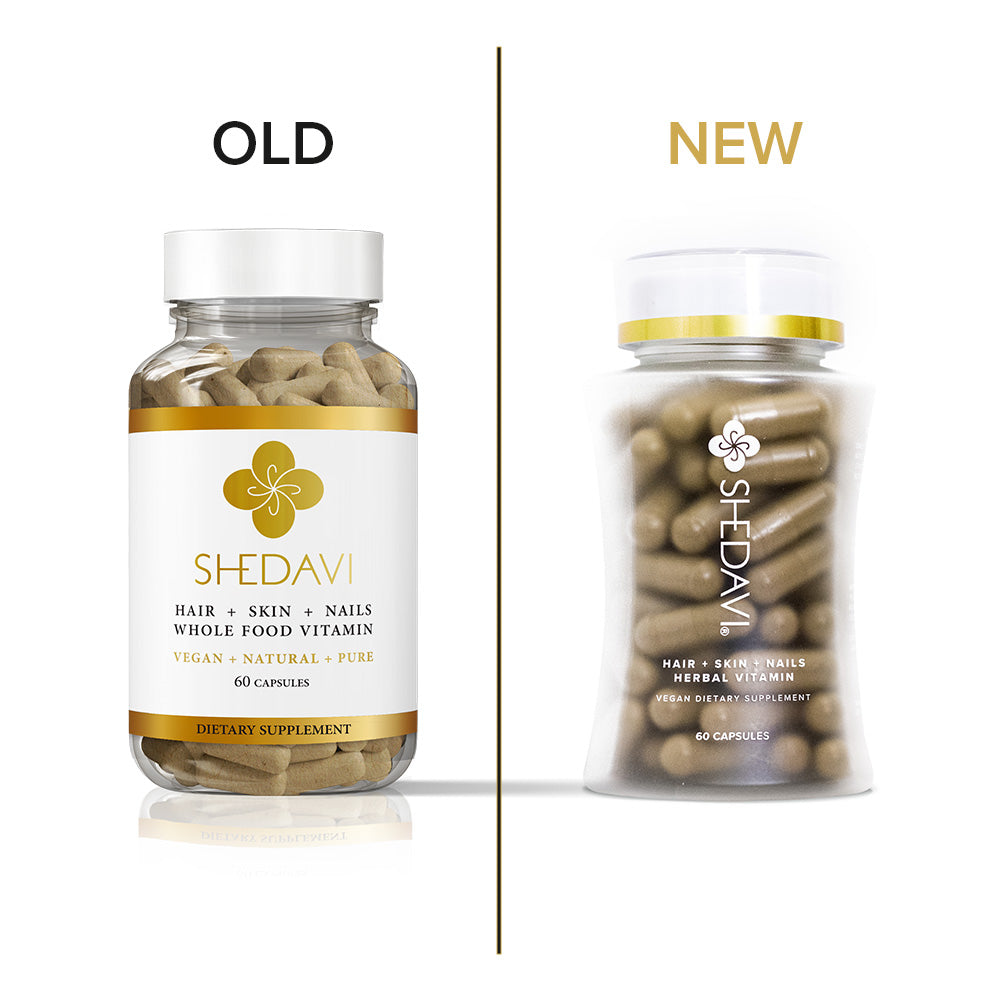
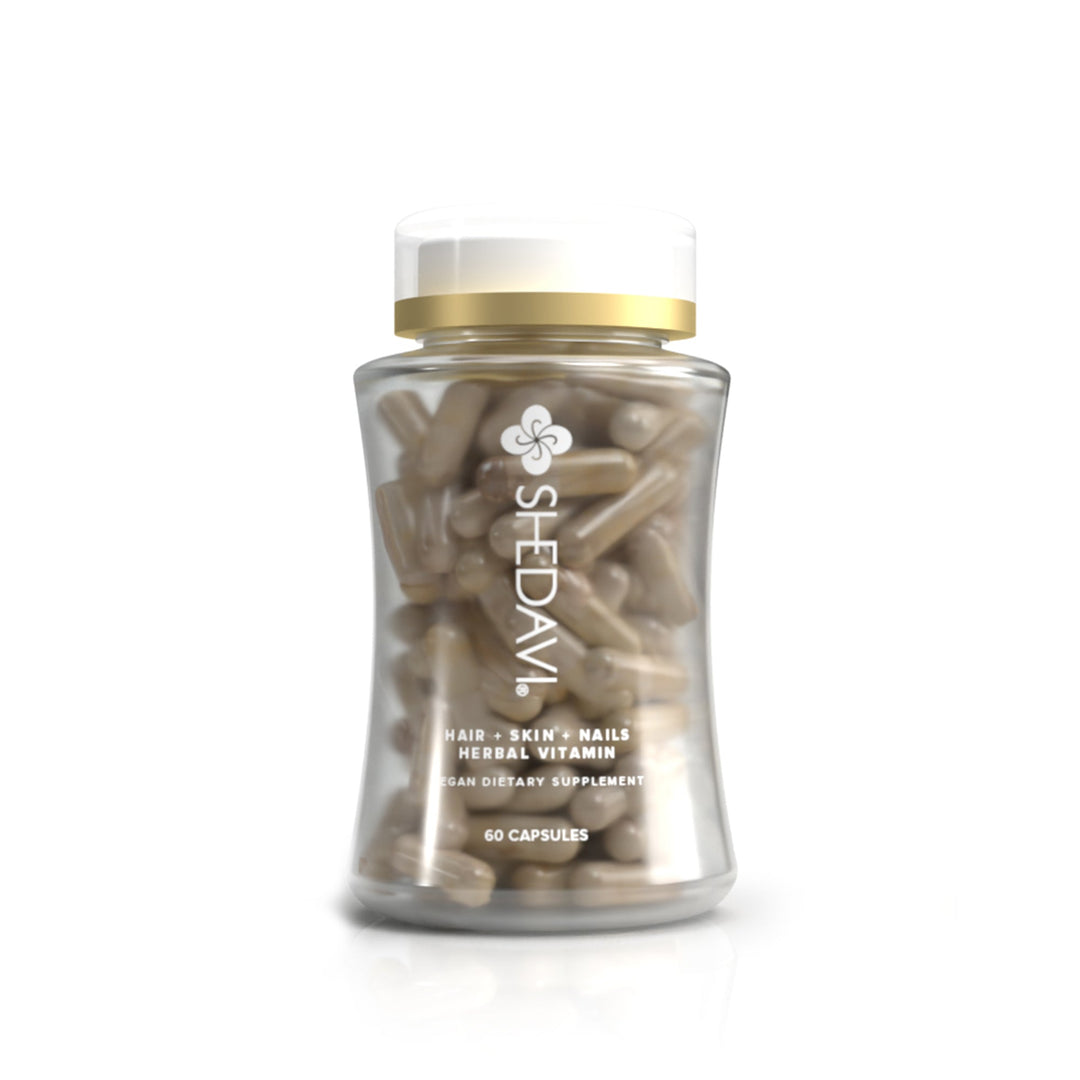
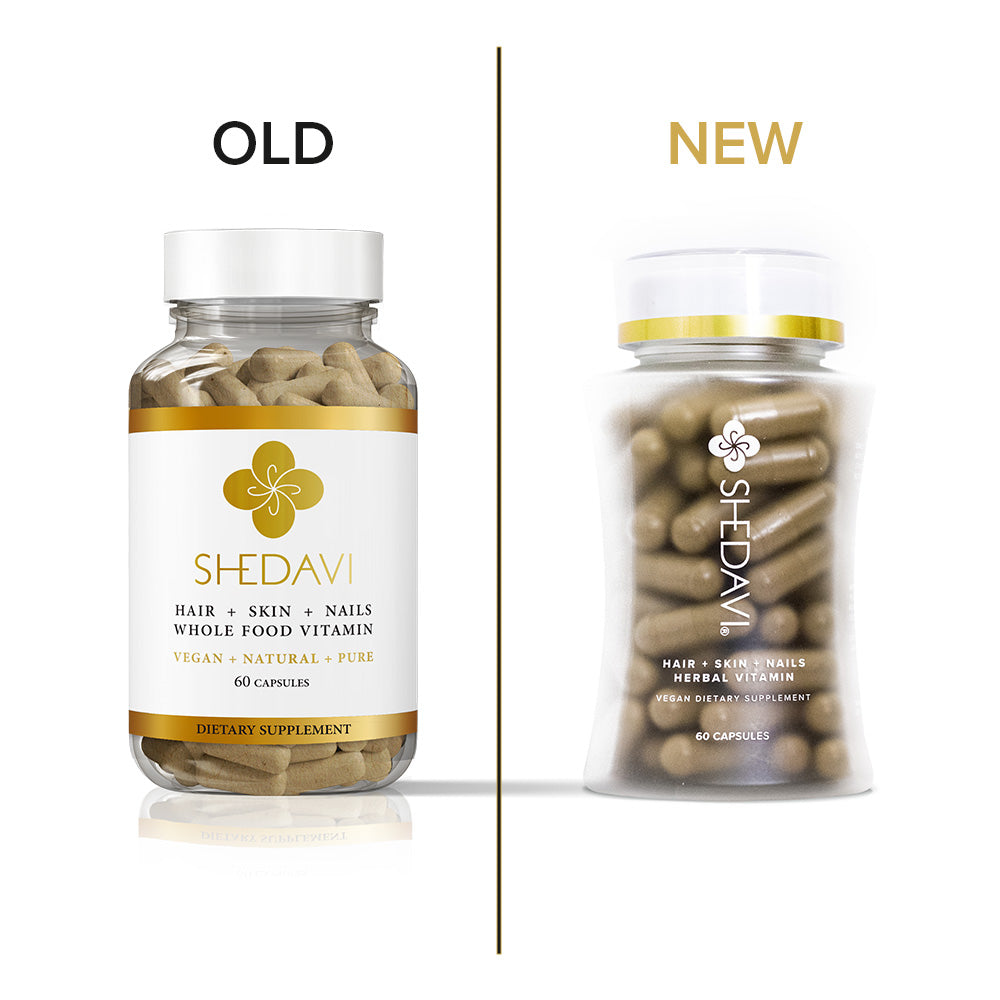
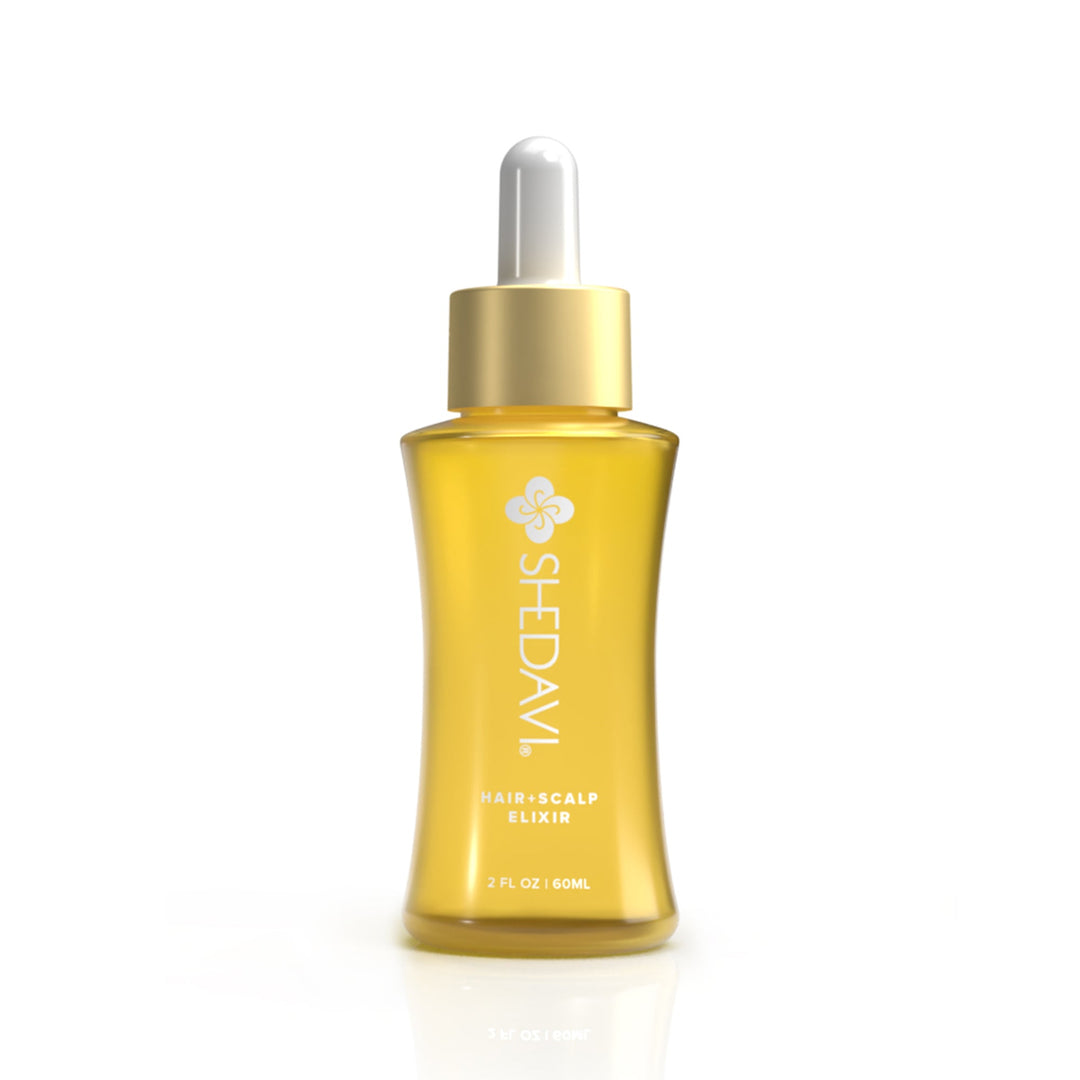
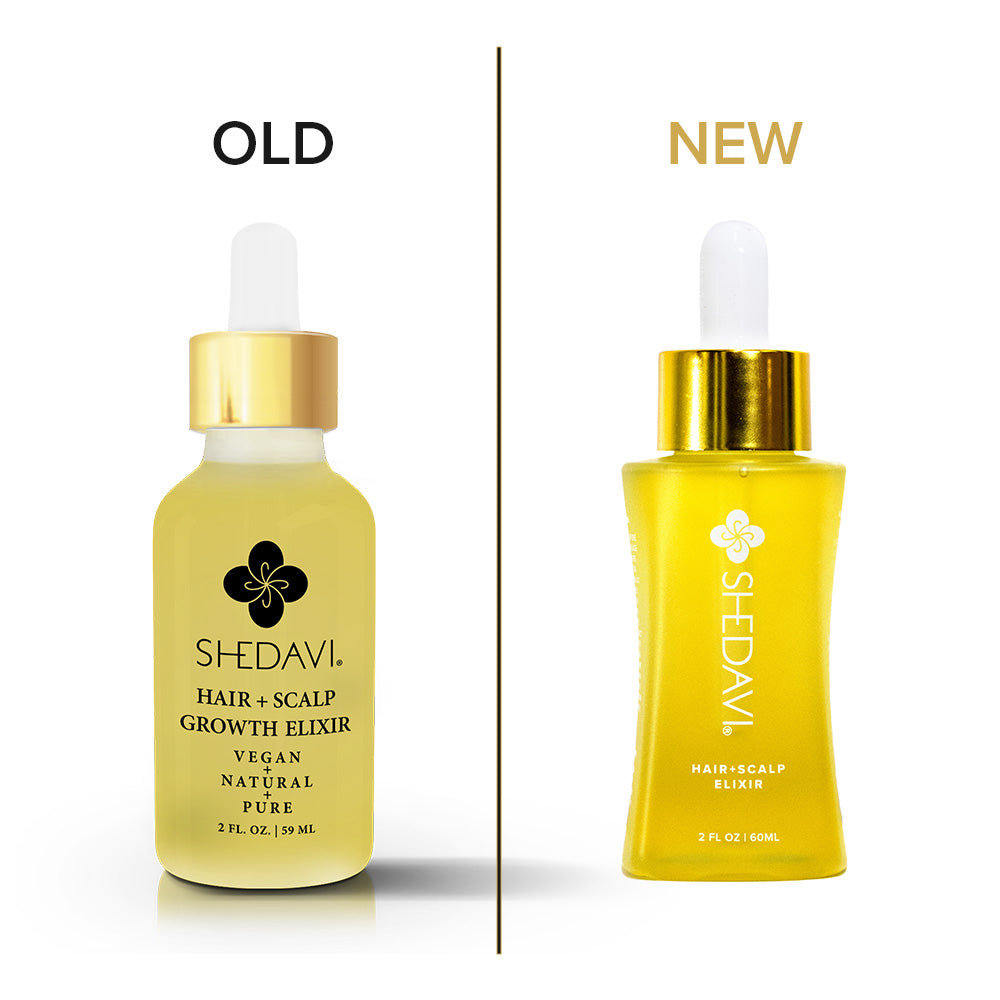
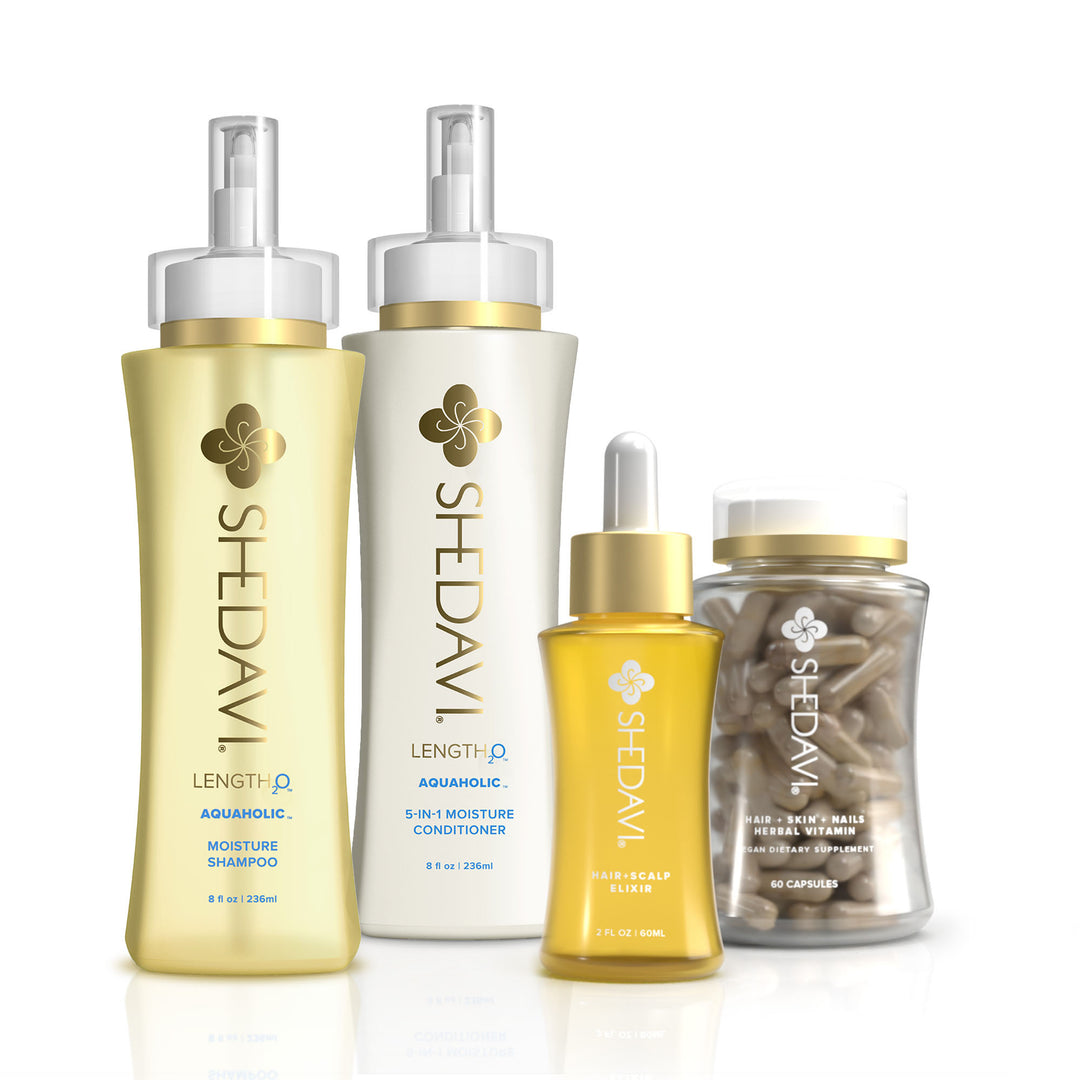
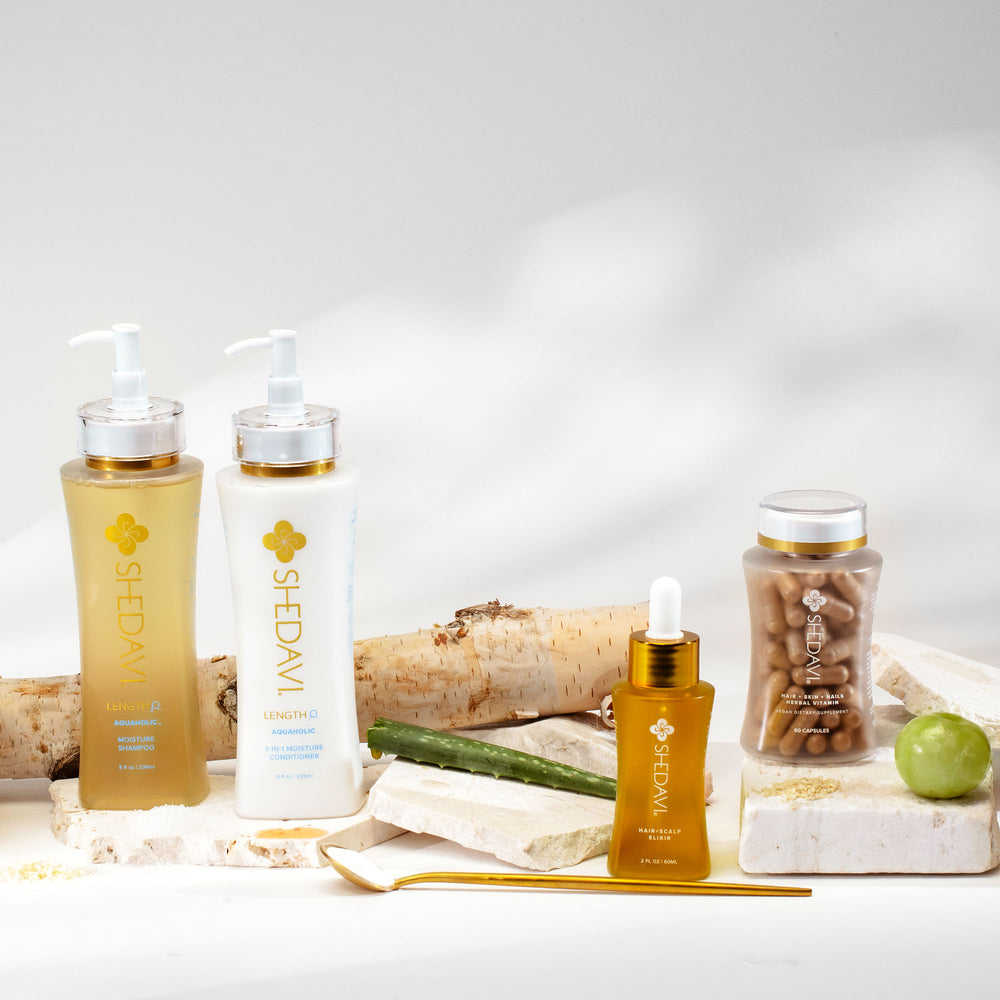
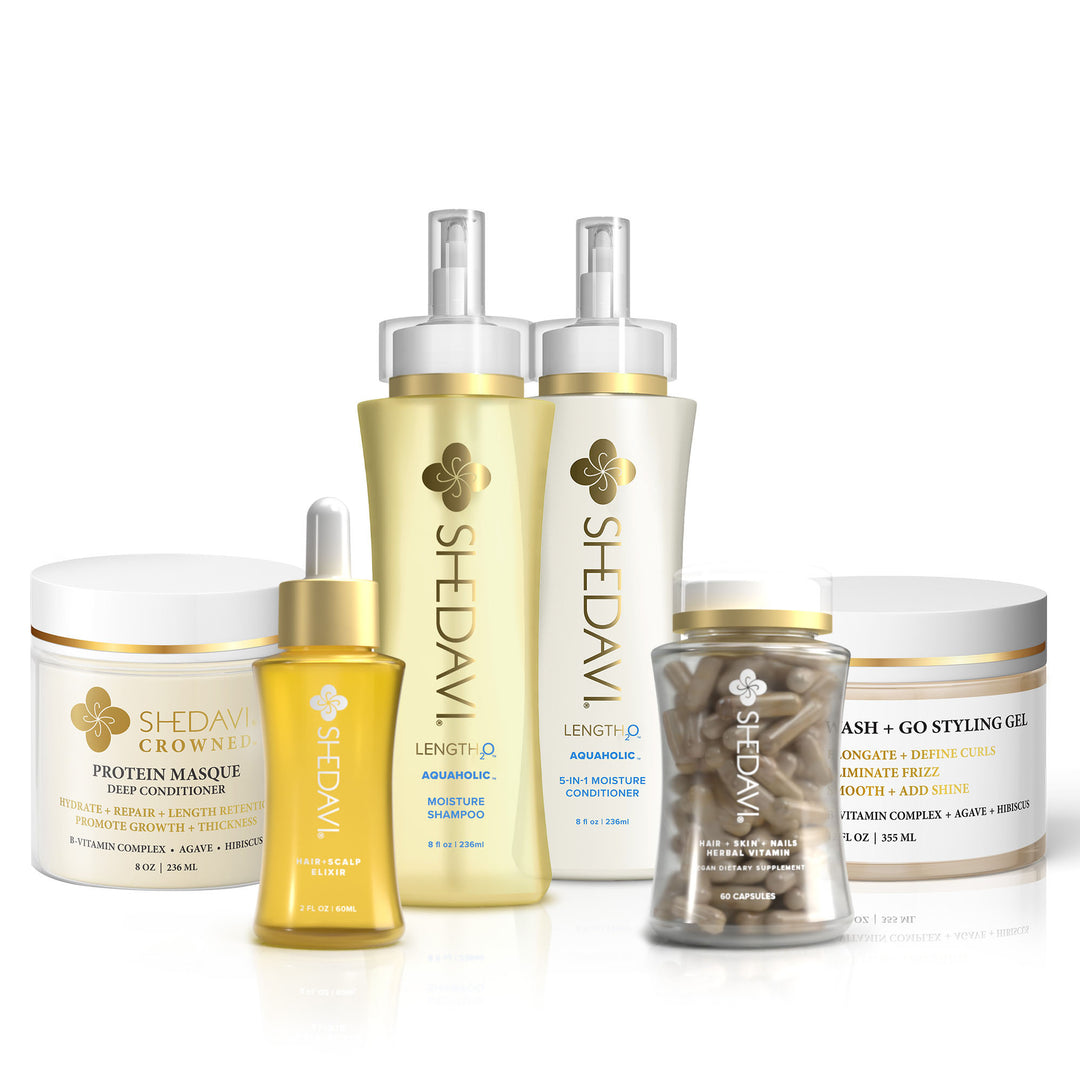
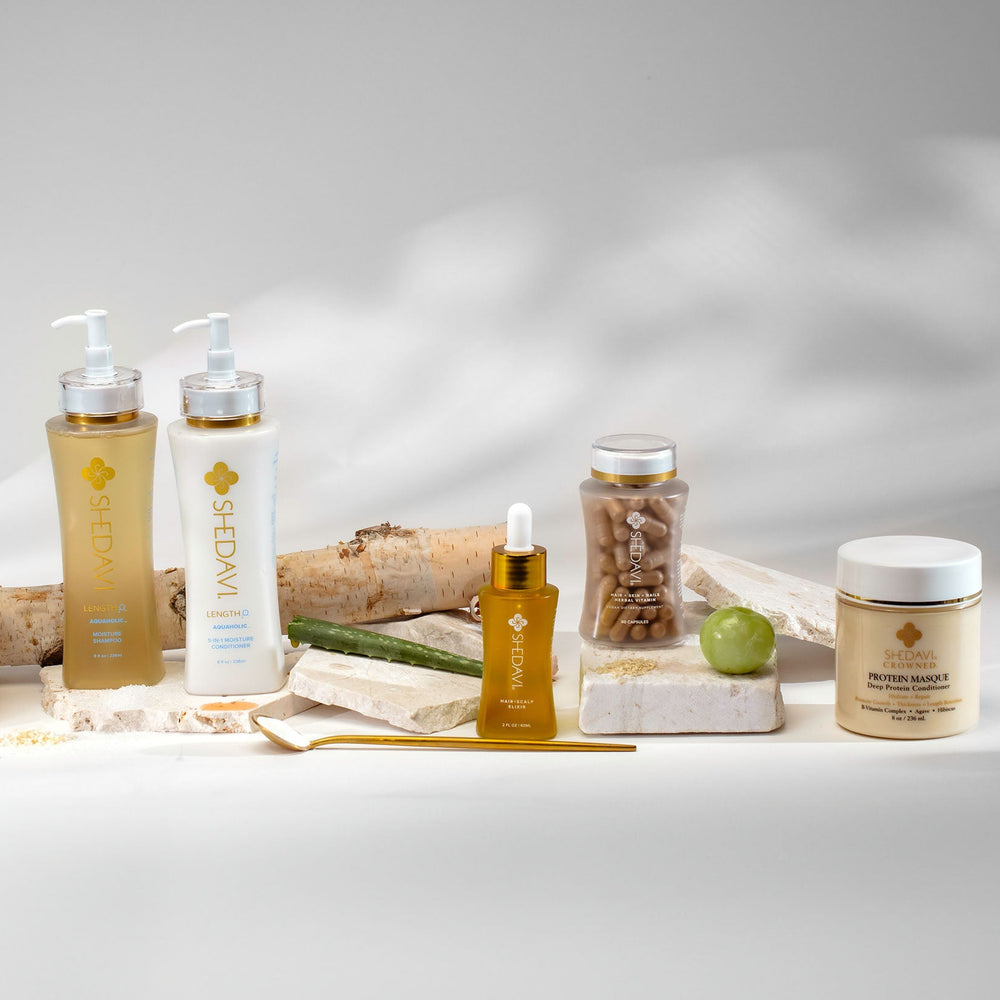
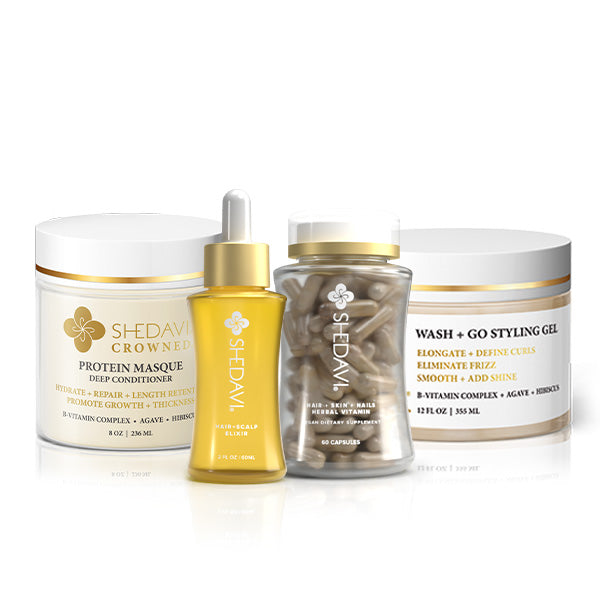

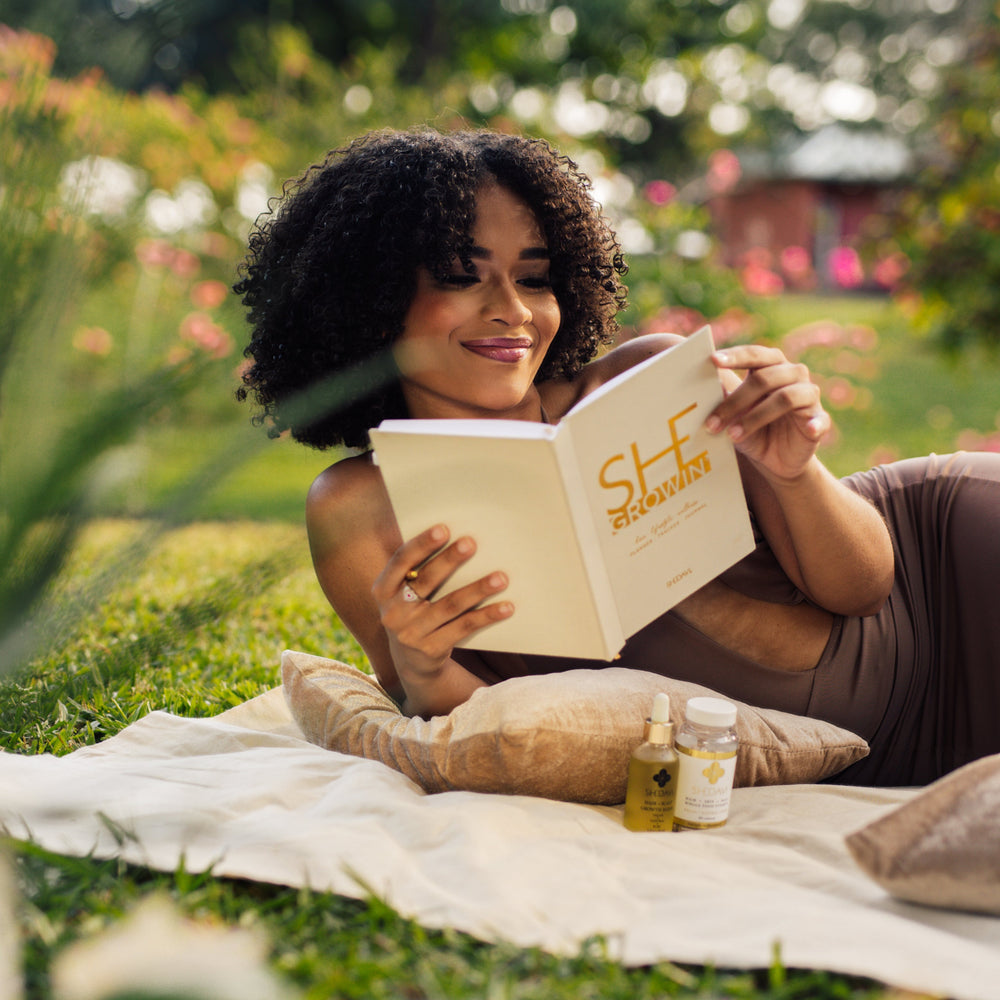
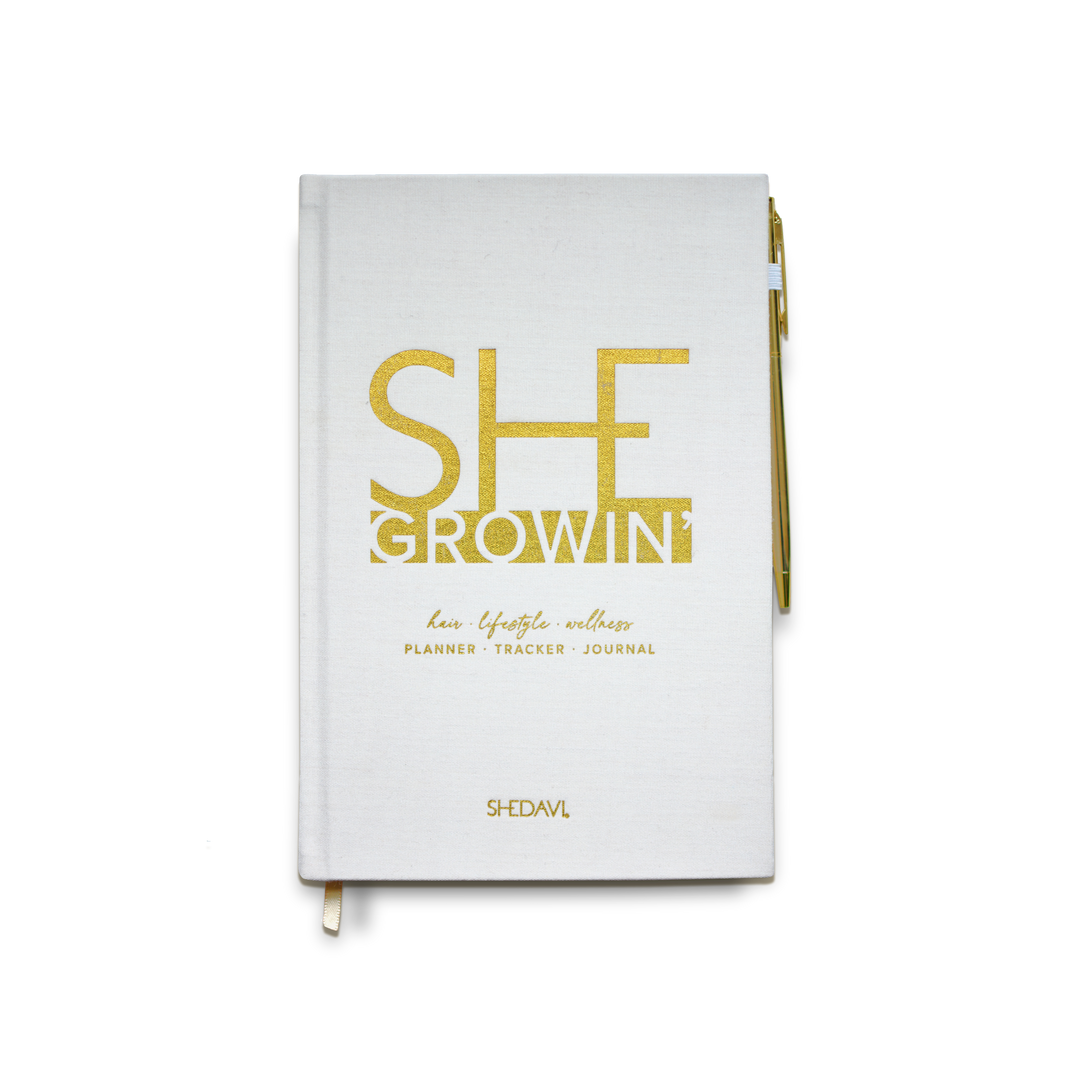

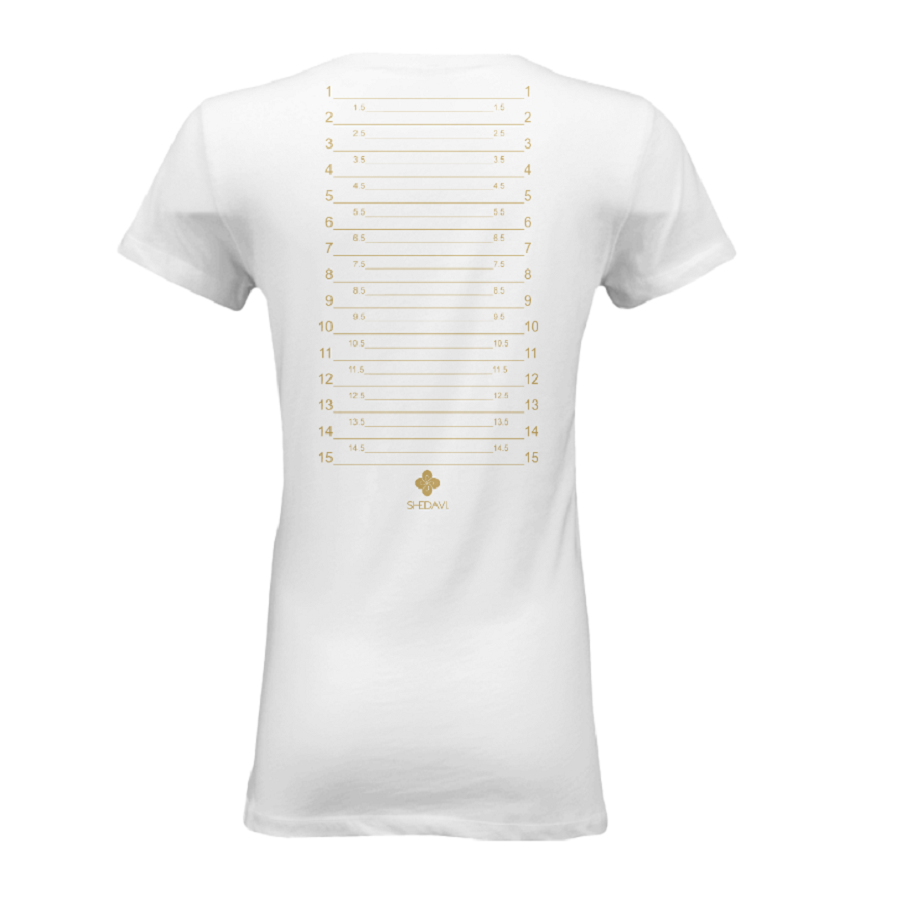
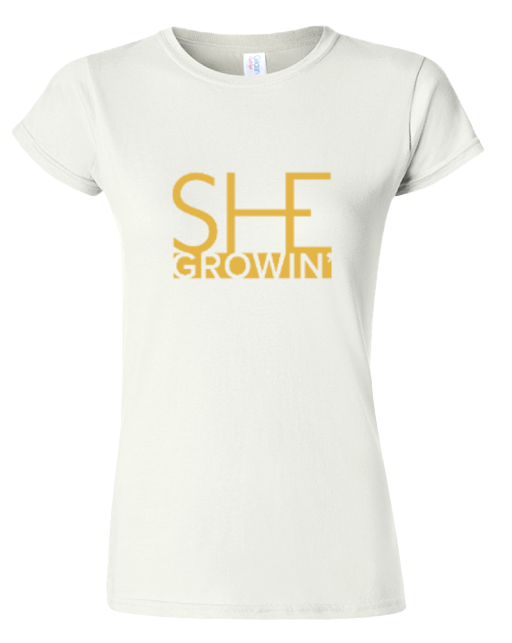

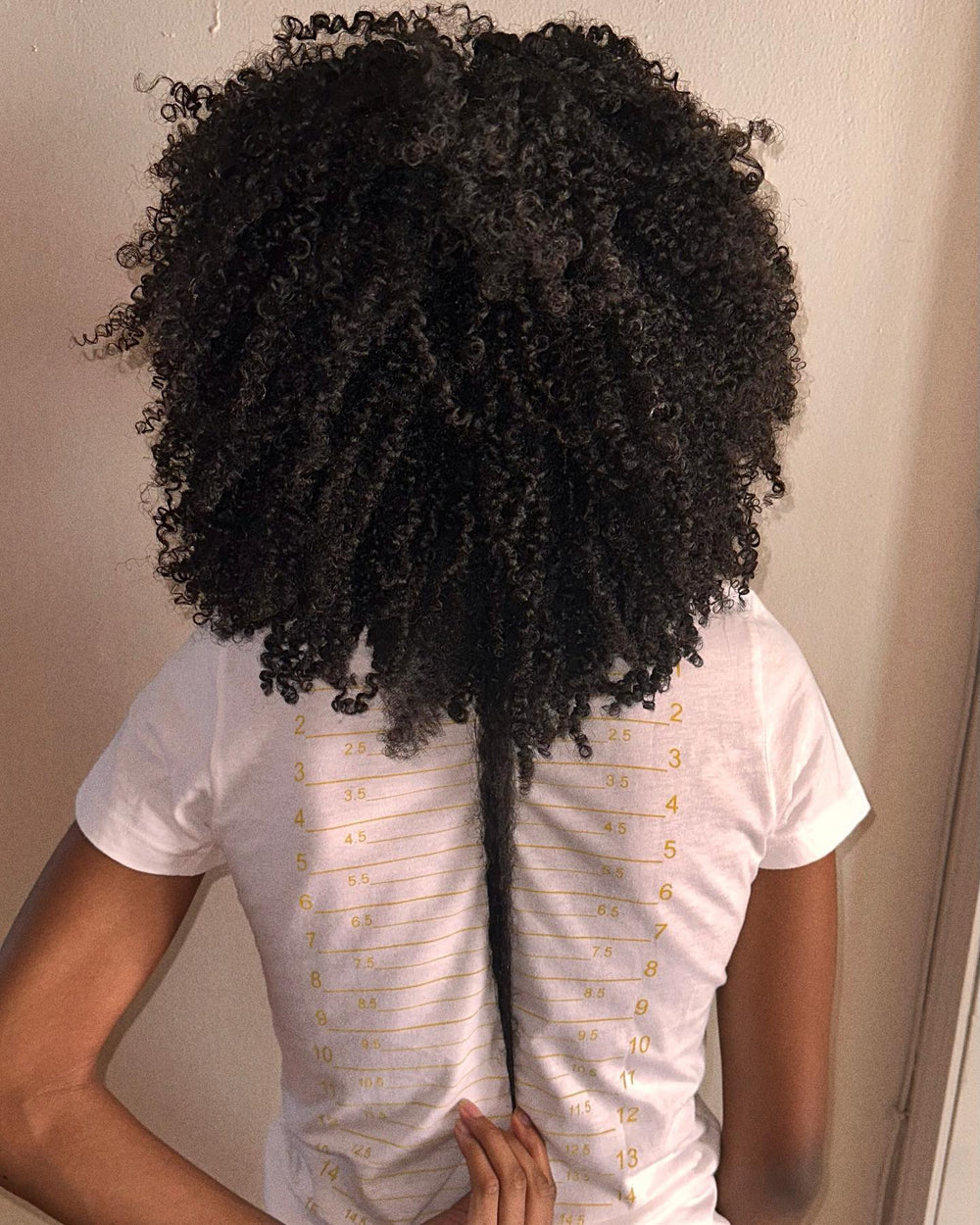
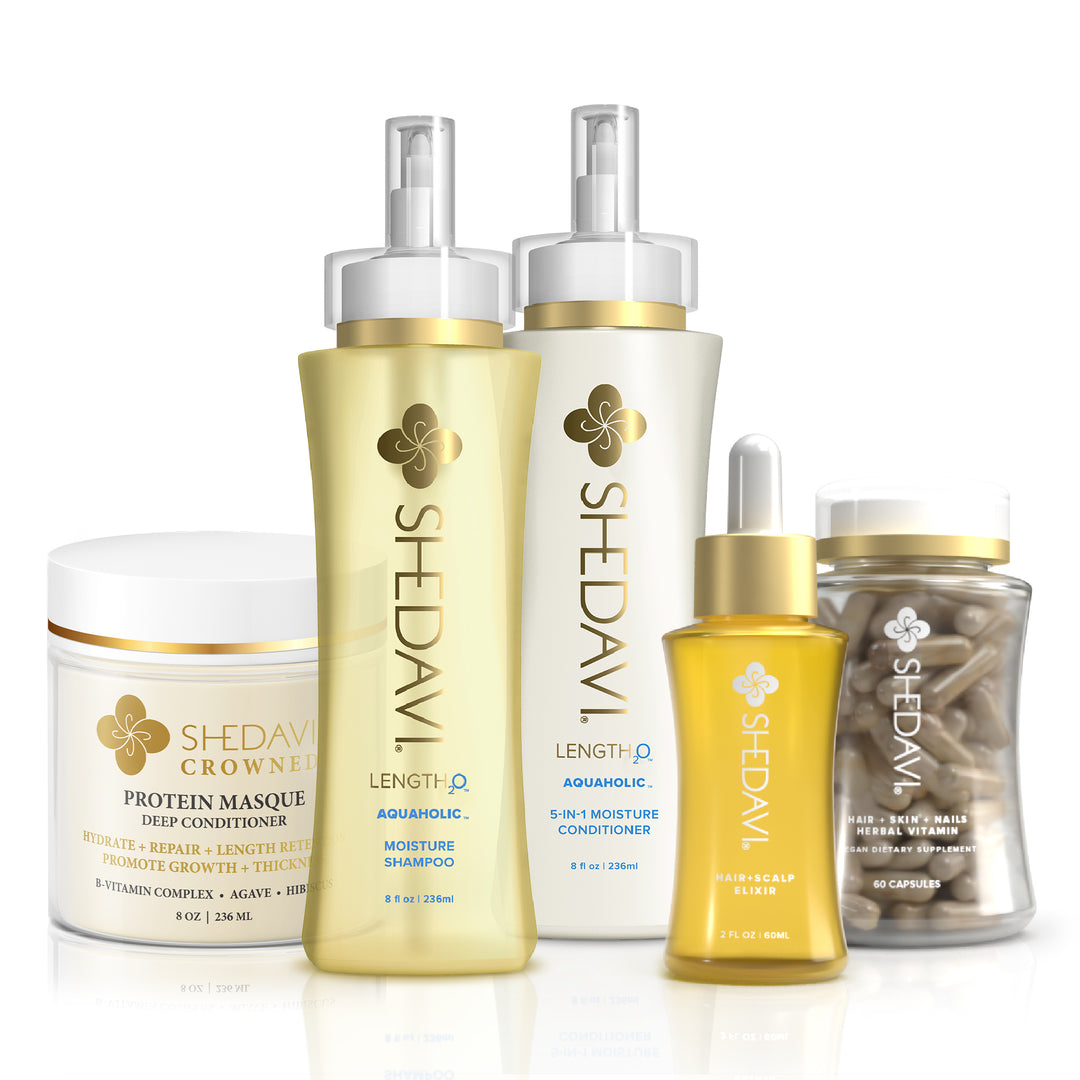
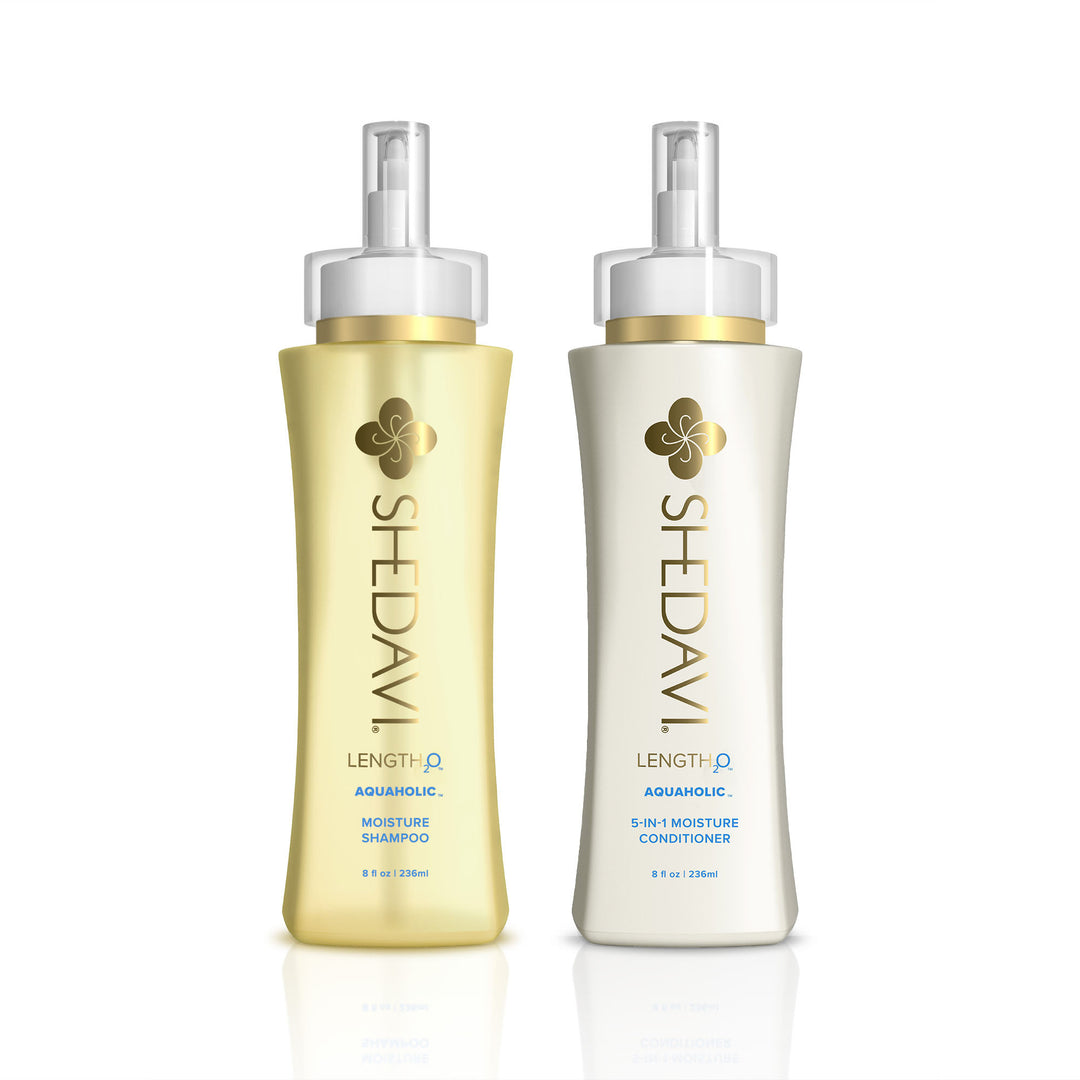
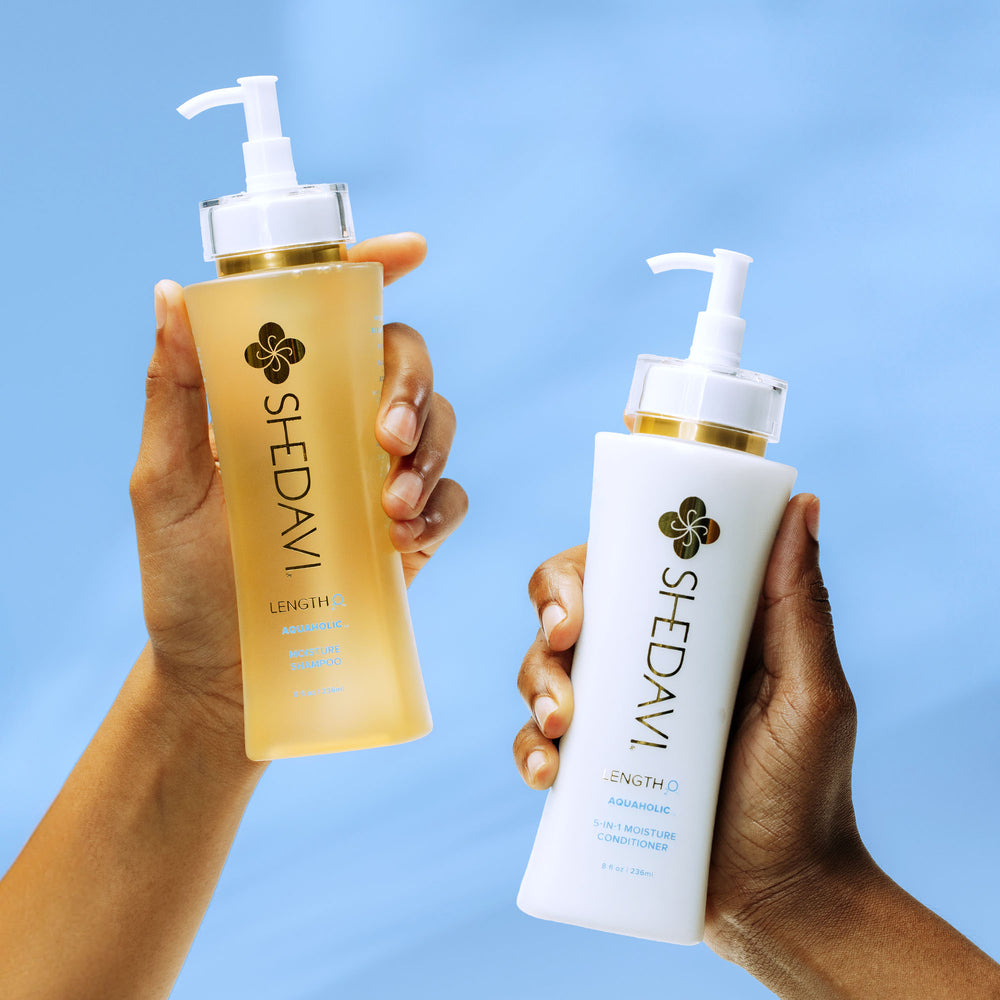
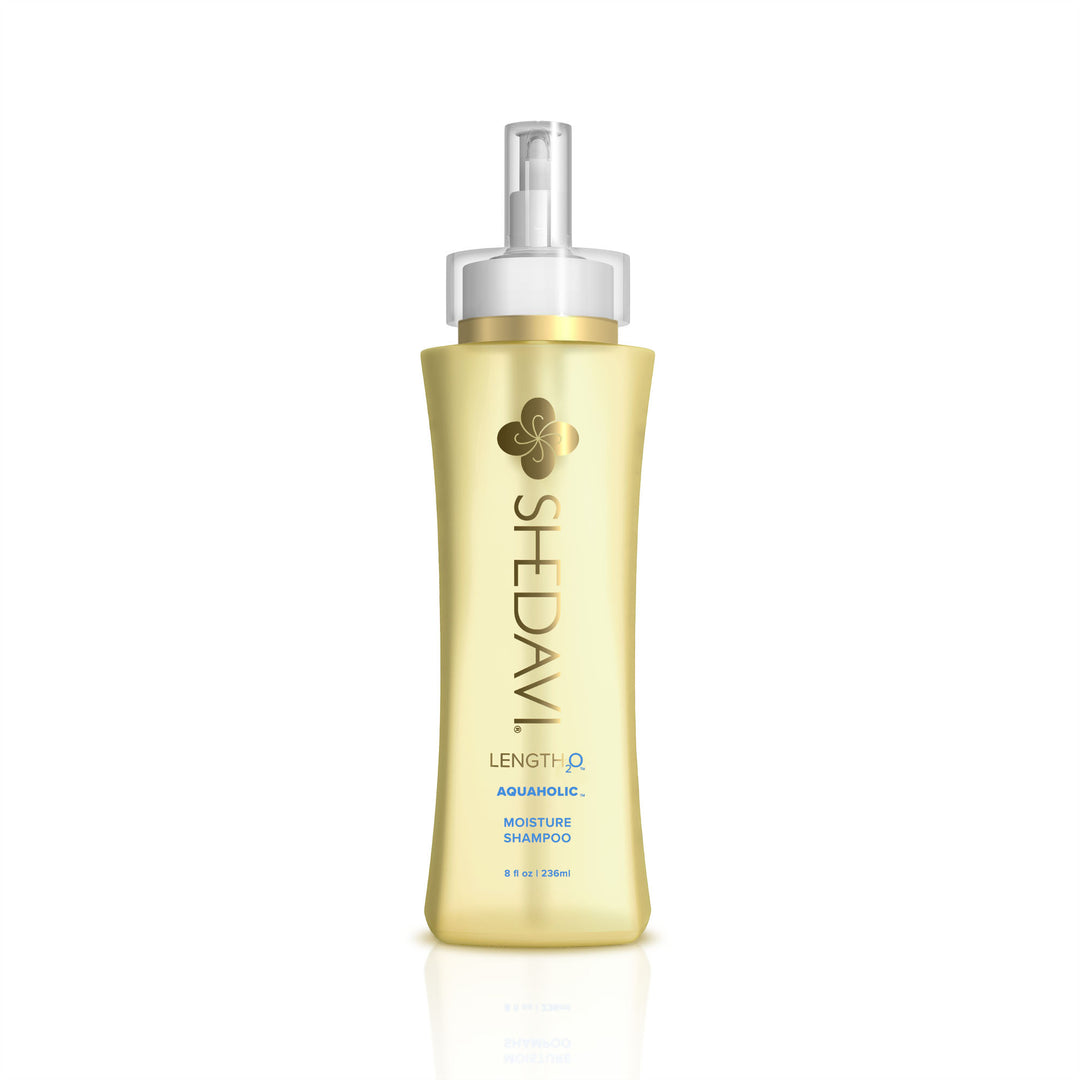
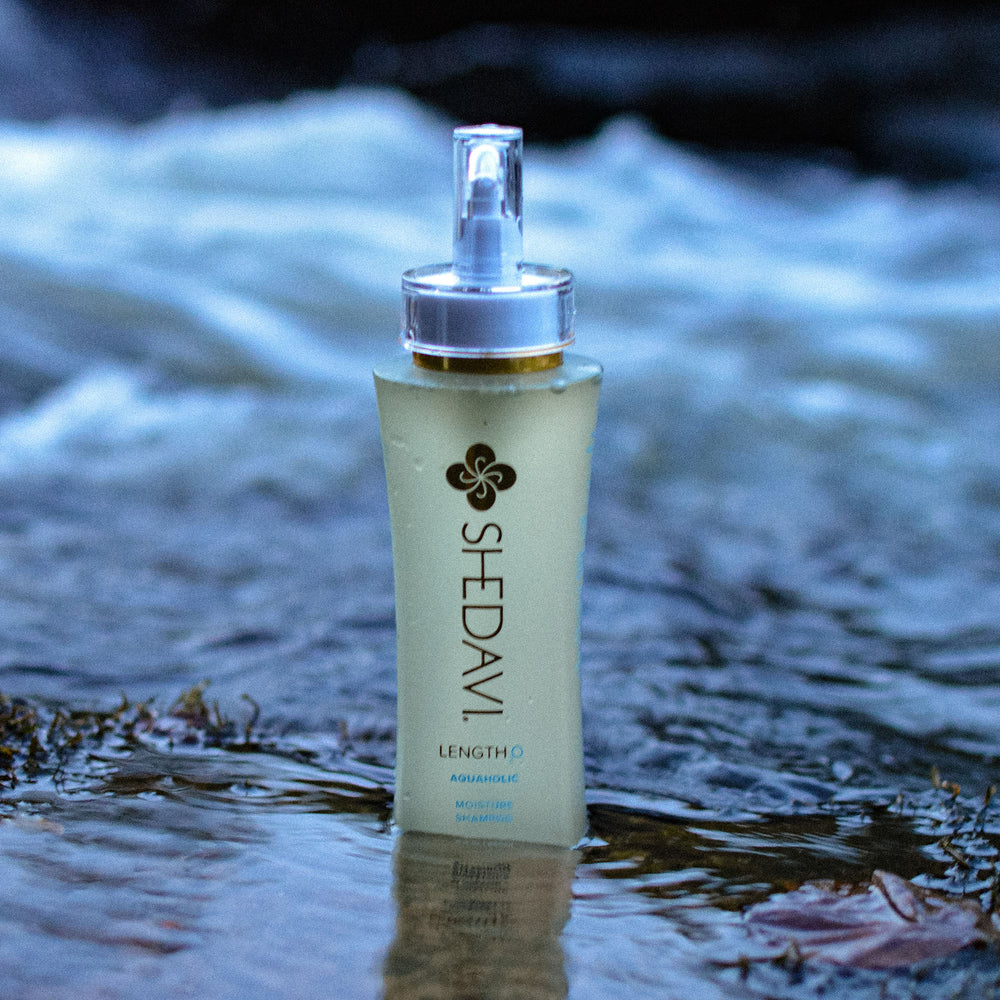
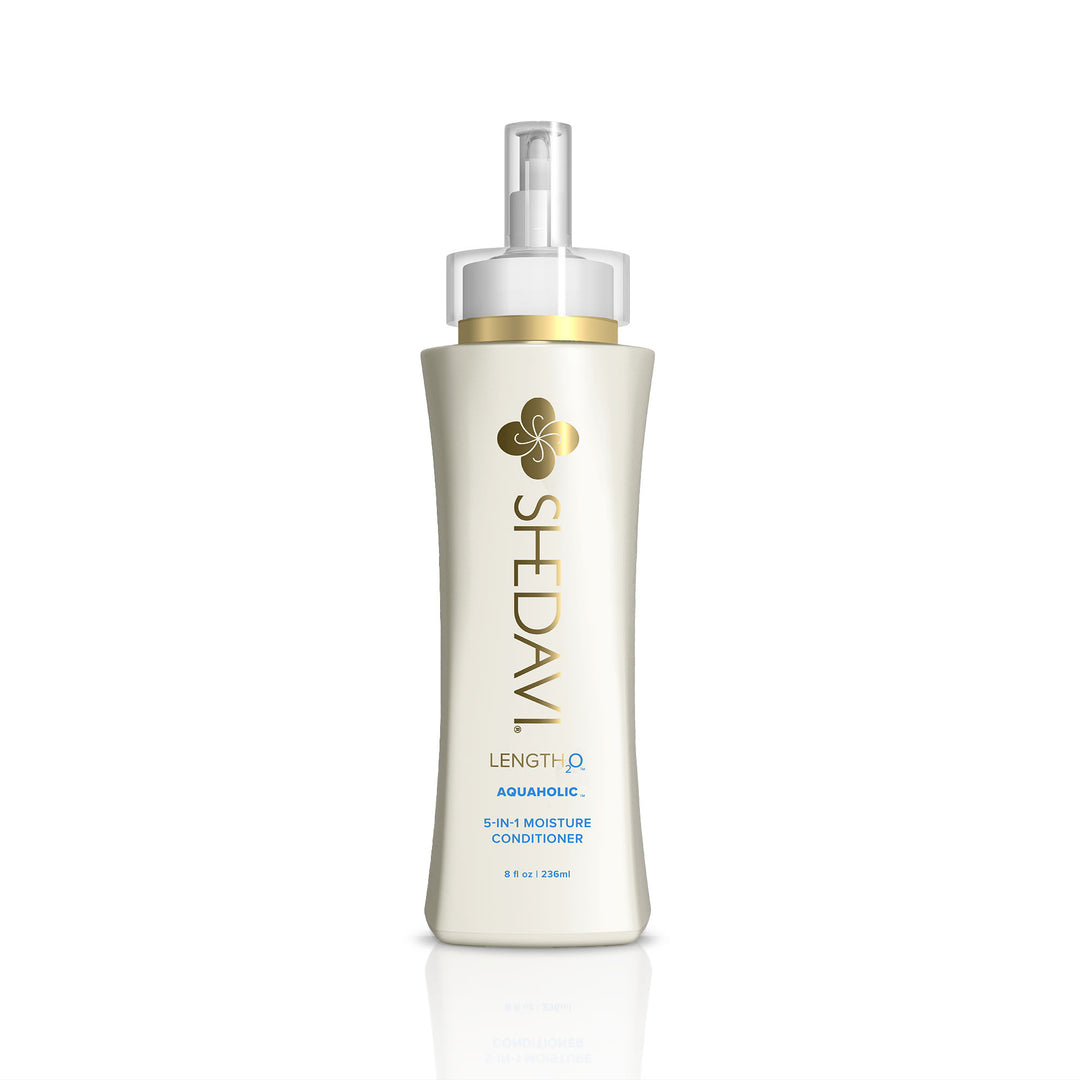
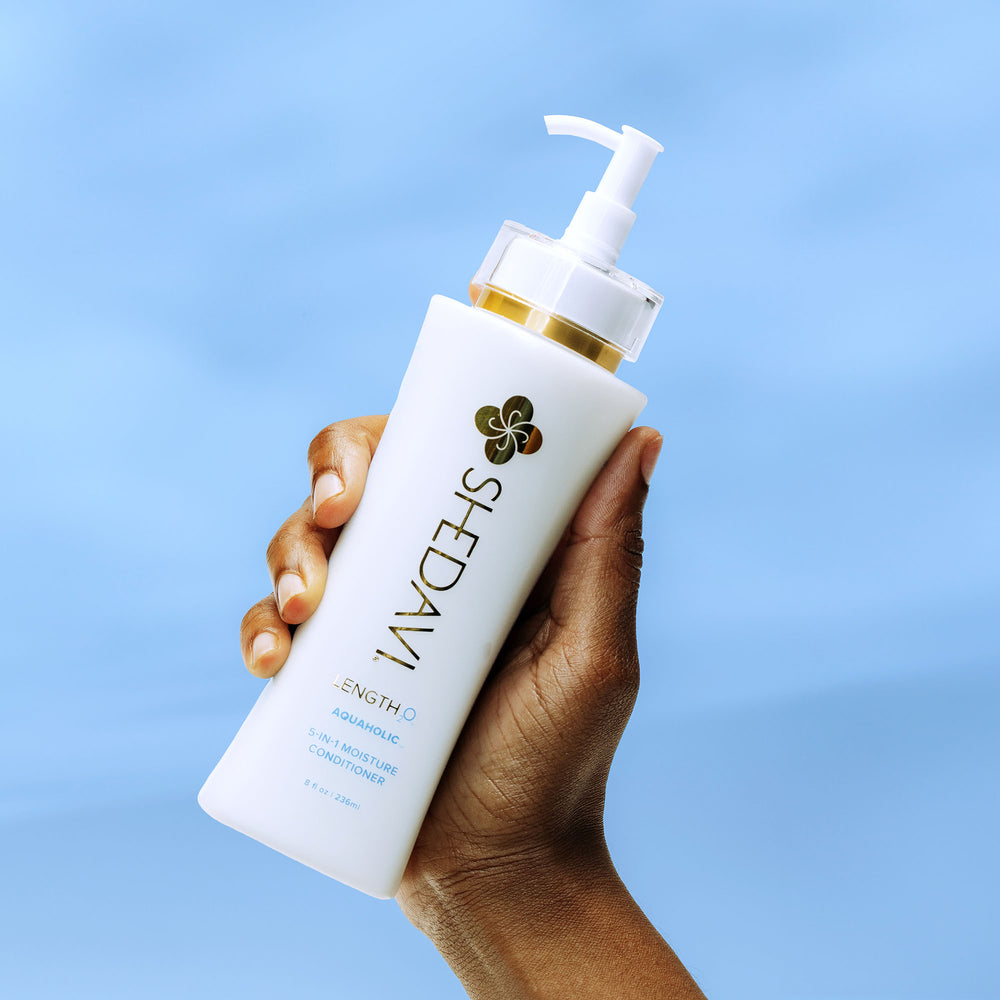

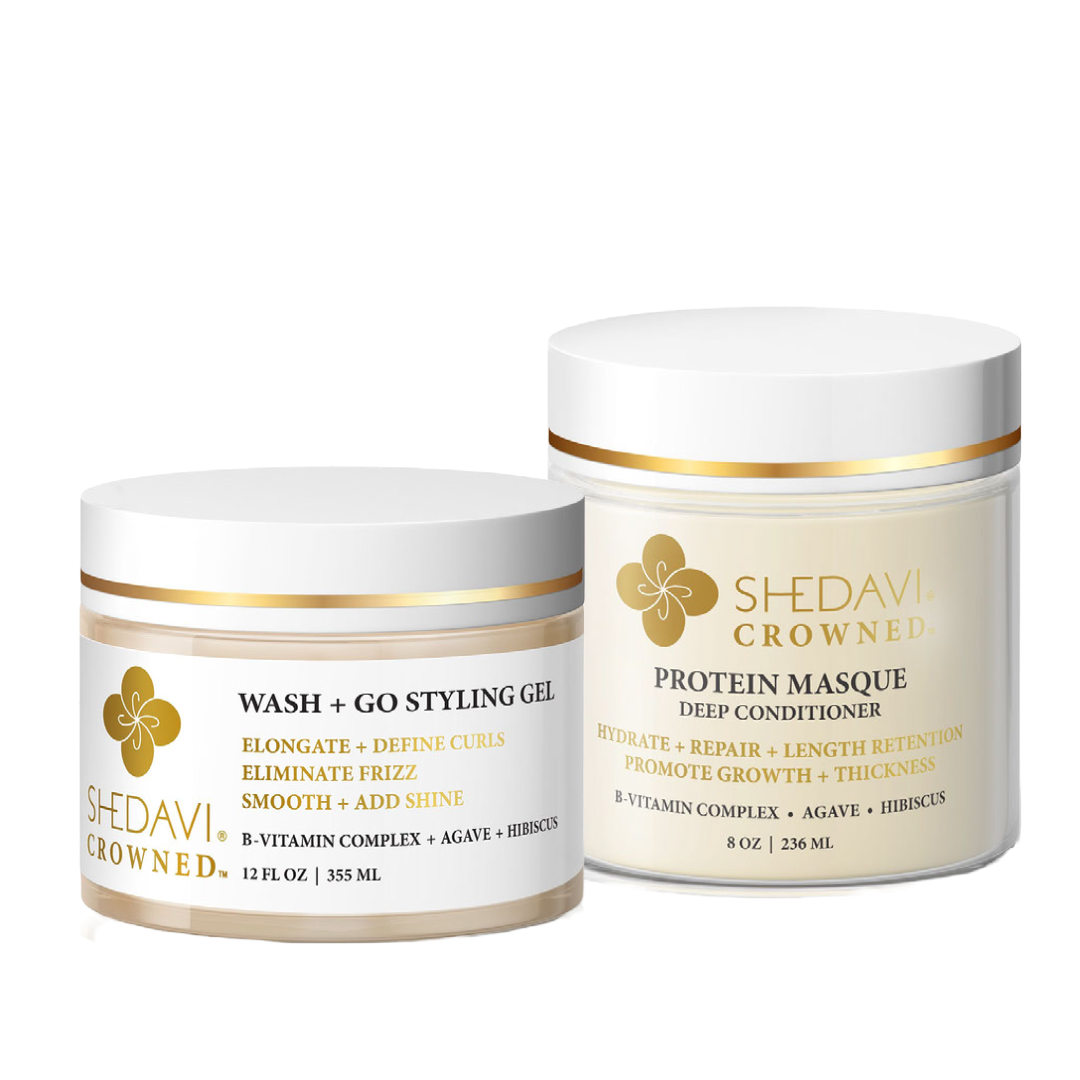
Leave a comment